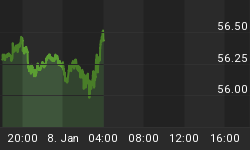9/7/2007 6:59:10 PM
With 2 weeks to expiry and the market closing at 1453, we're 127 points from our sold call and 143 points from our sold put.
Our system moved into buy mode at the start of the week but moved back into Sell mode later in the week.
Position Recap:
On August 9th we sold an SPX Sep 1310(SXYUB)/1300(SXYUT) Put Option Spread for a net credit of $0.80. (i.e. $80 per $1,000 of margin)
On August 17th we sold an SPX Sep 1580(SXMIP)/1590(SXMIR) Call Option Spread for a net credit of $0.40. (i.e. $40 per $1,000 of margin)
Please note: while there two separate positions open, $1,000 margin covers both spreads due to the fact that the market cannot close at both strikes simultaneously on expiration.
SPX Chart

We got our first confirmation during the week of a bullish break with a close above 1480, although it didn't hold and this now seems to have been a fake out. The chart above shows a "V" shape, if this pattern breaks down, it could get ugly for the bulls and while a close below 1460 isn't a great sign, the pattern is still solid and therefore the bulls still have a chance. The key for the bulls now is a close above the 50 day MA at 1486.
SPECIAL REPORT
This week I want to discuss option spreads a little more.
When people trade options they usually buy them, with the intention that the underlying asset moves either up if they have a call or down if they have a put. But in most cases it's rare for a trade to move in your direction straight after you get in, in fact, it usually trades immediately the other way just to frustrate you.
So when you're setting up a trading strategy, you need to allow some time for it to go through the normal gyrations. But when you're trading options, time is your biggest enemy as each day that goes by actually reduces the time value component in the option you've purchased (called Theta). In many ways it's like stepping into the boxing ring with one arm tied behind your back.
Spreads can help change the odds in your favor. A spread is the simultaneous purchase of one option and sale of another (for the same underlying asset). If you're using them to capture a directional movement of the underlying asset then the premium received from the sale helps pay for the premium on the purchase. However in our case, we don't aim to capture a particular directional movement, so we sell an option far out of the money and at the same time buy an option a further 10 points out of the money as an ultimate protection point. As the sold option is a little more valuable than the bought one, we collect a small premium for the risk we are assuming. As long as the market doesn't hit the sold option point by the time it expires, we simply collect that premium and do it all again the next month. I understand that this can seem complicated when you first start but if you're willing to open yourself up to this strategy, it can reward you very handsomely over time because unlike the straight option buyer, time is our friend.
Enjoy the weekend and Feel free to email me directly at angelo@stockbarometer.com if you have any feedback or questions.
















